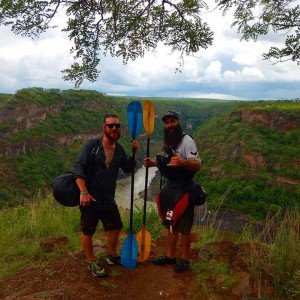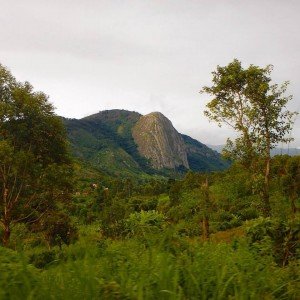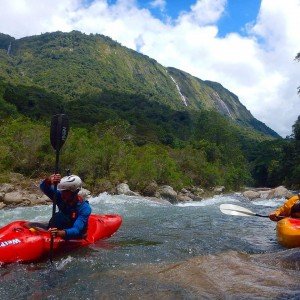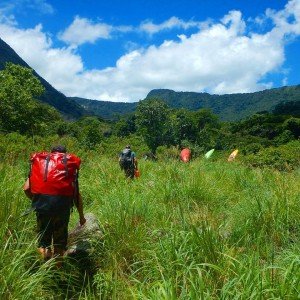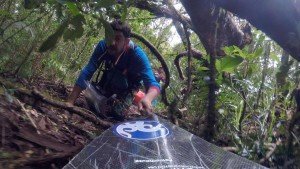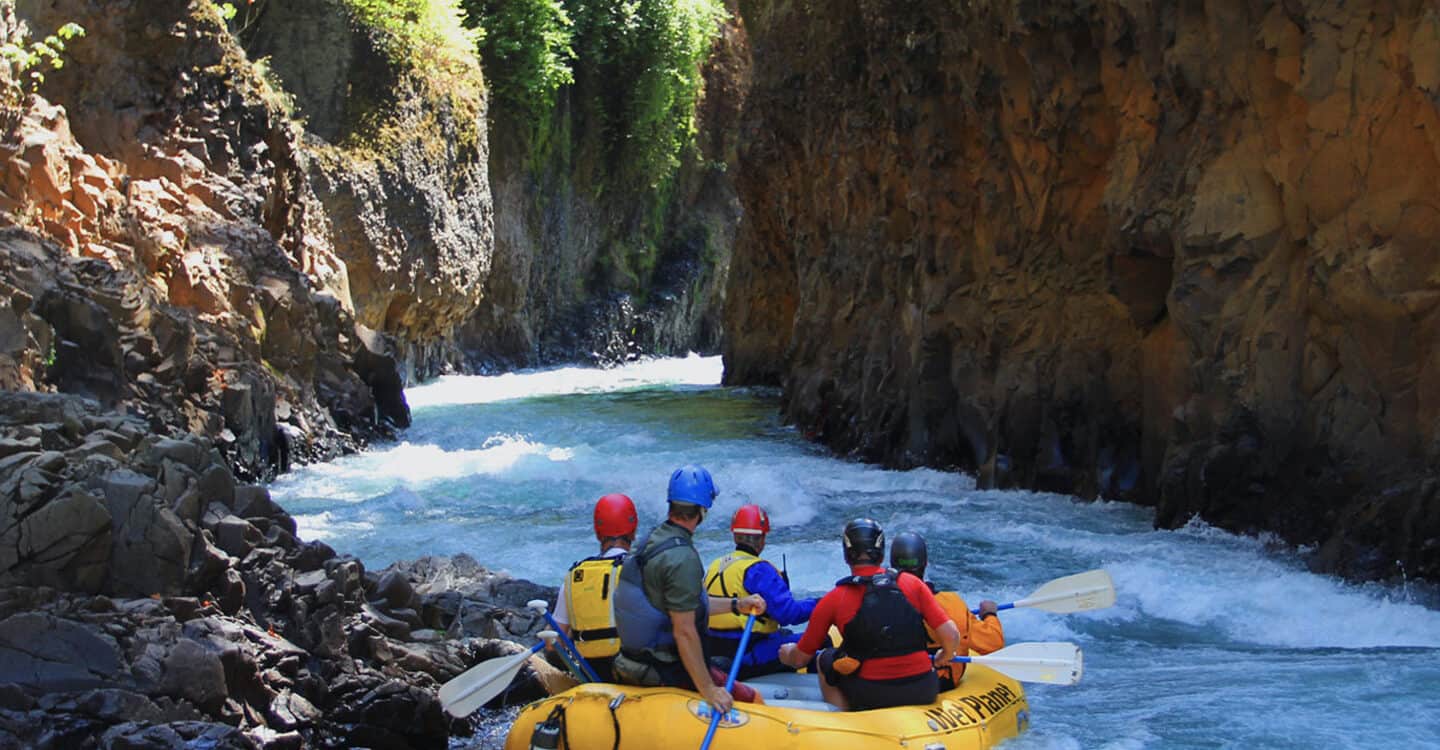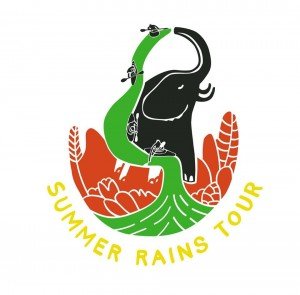
A team of Wet Planet guides, both past and present, have embarked on a journey to Africa for the winter. Tyler Houck, David Wells, Trevor Sheehan, and friend Sean Eddington are exploring remote regions of southern Africa, focusing primarily on the Eastern Highlands of Zimbabwe.
They are discovering new stretches of river on first descents, gathering water samples for a global micro plastic study, and documenting the adventure. They are also doing a lot of hiking through mountains with kayaks on their backs, building excellent shelters out of tarps, and on the rare occasion that they can find internet, sharing their stories and expertise.
So you too, want to travel internationally to go whitewater kayaking? Maybe you’ve seen some videos online of epic creek boating in South America, world class freestyle in Africa, or majestic multi-days in Asia. With so many incredible places to explore, there are a few key factors in picking the right destination. First, what is your travel availability? Figure out when you can travel and for how long. This can play a big part in making sure that you are going somewhere during the proper season. Just about every global whitewater destination has a season for paddling, typically known as a high water season and low water season. This can mean different things for different regions. For example, Ecuador is a great location during their dry season (usually December through February), but Nepal tends to be better before the water gets low (late October through early December). Do your research, and if possible, talk to someone who has been.
Once you’ve decided on your destination, you can begin the rest of the planning process. Buying a plane ticket often seems to be the most difficult part. Typically about 4 months from your departure date will be when you’re likely to find the least expensive tickets for international flights. Websites such as Kayak, Expedia, or Skyscanner are great tools to help compare tickets. As you’re doing this, remember to look closely at the lay overs and baggage allowances for different airlines. Saving a few hundred dollars on a ticket might not be worth it if you’ll be paying that to check your kayak in or on overnight lodging.
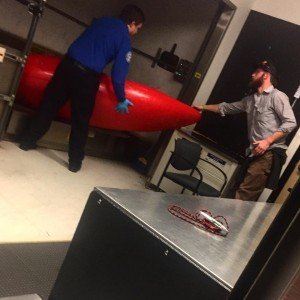
Contacting your airlines ahead of time to find out their regulations on oversized baggage can save you a headache at the airport
Next, head to the CDC website or set up an appointment at your local travel clinic. Depending on where you’re going, you may need some shots and immunizations. Hepatitis, Typhoid fever, Japanese Encephilitis, and Yellow Fever are some of the usual suspects, along with anti-malarials.
Now that you have your ticket and immunizations taken care of, where do you start packing for an international kayaking trip?
Any large semi-waterproof drybag is ideal. NRS Bill’s Bag or some of Watershed’s larger bags are popular choices amongst traveling boaters. Begin by putting your kayaking gear in first, then begin building around it.
Based on our experience, ideally you should include the following while packing:
-A dependable water filtration system
-A guide book for the region
-A phrase book if you don’t speak the local language
-A river guide book for the area
-River gear – suitable for the climate and water that you will be in. Don’t forget your paddling top!
-A Personal Med kit – Typically it’s a good idea to have an on river med kit with your basics, as well as a larger off-river med kit with everything else including antibiotics tablets and ointments, rehydration salts, EmergenC, etc. Keep in mind that many of the things we’re accustomed to having available at home may not be accessible while you’re traveling.
-Tech kit/Electronics bag – This has all of your batteries, charging cables, cameras, power adapters etc. Research what kind of power adapters you might need and purchase them ahead of time.
-Repair kit – Always have a roll of Gorilla tape, sewing kit, Speedy stitch, and spare kayak bits. We recommend traveling with a heat gun and spare plastic, along with other useful items that might be difficult to find abroad.
-Off River Clothes – Take half of your clothes that you think you’ll need and leave them behind! Check what to expect from the weather in the regions that you’ll be travelling, as it may vary. Don’t forget the important things like a raincoat and hat.
-Miscellaneous bag containing random things like water purification devices, deck of cards, a good knife, sunscreen, and any other small things you might want to bring.
-Shelter bag – this is only necessary if you plan on spending time camping. If you’re going to be doing day trips and staying in a hostel, this might just add extra weight. A hammock and lightweight tent fly are good options if you’re not sure.
-Sunscreen, headlamps, spare batteries, toothbrush, and hats are things that are sometimes overlooked in the packing process.
Before you leave, try to make local contacts via the internet to help make your transition smooth. It’s useful to know where you’ll be staying the first night, as you’ll likely be tired from traveling.
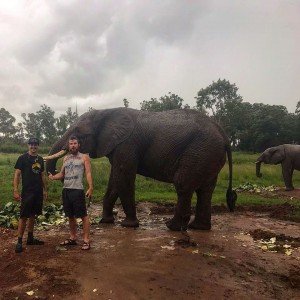
Dave and Tyler want to bring their new friend home from Zimbabwe. There’s room in guide camp for him, right?
Last, but certainly not lease, keep a positive attitude and an open mind. Make the most of your adventure and be mindful of how you represent yourself while in other cultures. There is a big world out there waiting for you to explore it!
Author Tyler Houck has worked in the whitewater industry for the last 12 years. Coming from West Virginia, where he guided on the Shenandoah, Potomac, and Cheat Rivers before moving to the Pacific Northwest to work for Wet Planet Whitewater. He has kayaked class V rivers and worked guiding in Ecuador, Nepal, Uganda, and Zimbabwe. Currently he is traveling through Southern Africa as a part of the Summer Rains Tour. He is exploring rivers throughout Zambia, Zimbabwe, South Africa, Swaziland, and Lesotho. You can check out the Summer Rains Tour following their adventures kayaking in Africa on Facebook: Summer Rains Tour and on Instagram: @Summer_Rains_Tour



